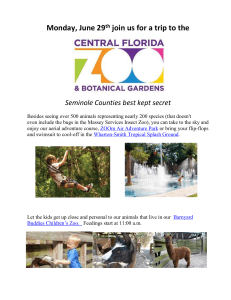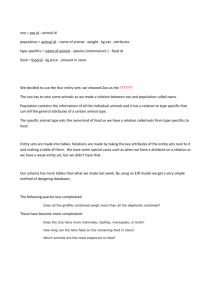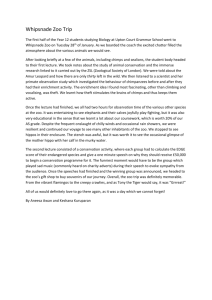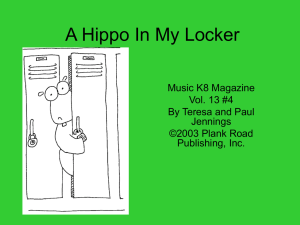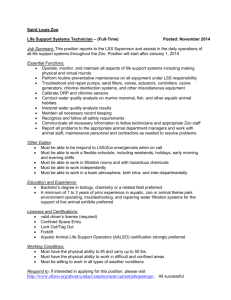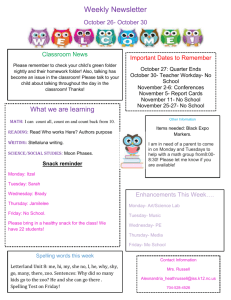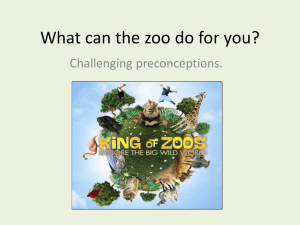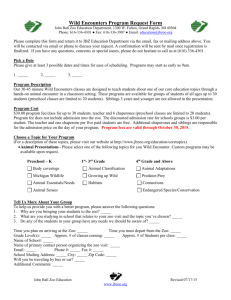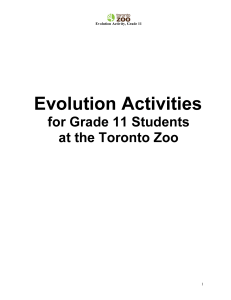Evolution Culminating Activity
advertisement
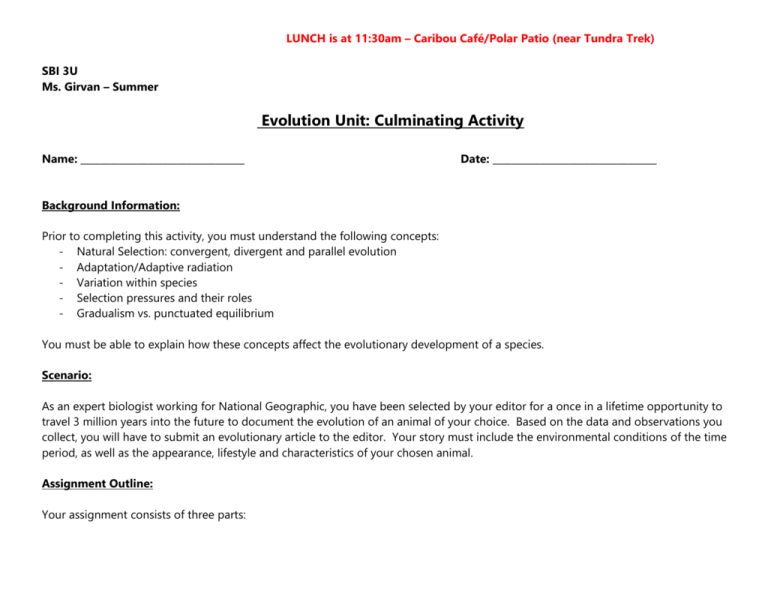
LUNCH is at 11:30am – Caribou Café/Polar Patio (near Tundra Trek) SBI 3U Ms. Girvan – Summer Evolution Unit: Culminating Activity Name: __________________________________ Date: __________________________________ Background Information: Prior to completing this activity, you must understand the following concepts: - Natural Selection: convergent, divergent and parallel evolution - Adaptation/Adaptive radiation - Variation within species - Selection pressures and their roles - Gradualism vs. punctuated equilibrium You must be able to explain how these concepts affect the evolutionary development of a species. Scenario: As an expert biologist working for National Geographic, you have been selected by your editor for a once in a lifetime opportunity to travel 3 million years into the future to document the evolution of an animal of your choice. Based on the data and observations you collect, you will have to submit an evolutionary article to the editor. Your story must include the environmental conditions of the time period, as well as the appearance, lifestyle and characteristics of your chosen animal. Assignment Outline: Your assignment consists of three parts: 1. Observations of your animal and its environment in present day conditions (location: Toronto Zoo). 2. Observations of your animal and its environment in the future (location: 3 million years in the future!). 3. Evolutionary Article. PART 1: Observations of Animal at Toronto Zoo In order to gather some understanding of the different environments, their climate and wildlife (both fauna and flora), you should visit at least two of the zoo’s zoogeographical pavilions/areas. There are five zoogeographical pavilions/areas at the zoo: Eurasia, Indo-Malaya, Australasia, Americas and Africa. Activity #1 – 30-45 minutes (Before Lunch) Complete Observation Table #1 for two different environments This information will serve to give you ideas about the different components you need to consider when describing the futuristic environment and will show you some adaptive trends in animals in specific environments that can help you predict the way your futuristic animal may adapt. Activity #2 – 30-45 minutes (After lunch) You must now choose an animal in one of these regions and make careful observations of both the region and the animal itself. Refer to the appendix for a list of animals. (Each student will study a different animal, so you MUST have the teacher’s approval before proceeding to the next step.) Pick the ancestor animal of the one you will be describing in Part 2 and 3. For example, if you love tigers and want to come up with the evolution story of a new tiger species, complete your observation tables at the zoo on a tiger and a related animal, such as another big cat (feline). The objective of this exercise is for you to be able to make inferences about the variation (both physical and behavioural) of related animals living in different environments. These inferences in turn can lead you to logical and data based conclusions about the evolutionary trends of your animal. Remember: Evolution is an interaction of existing forms and environmental challenges. Not all features of an organism are current adaptations. Many are just inherited and may be adaptively neutral. Complete Observation Table #2 for your chosen animal and a related animal. Be sure to consider selective pressures and adaptations that may have affected the organisms in your region. The animal I wish to observe and eventually write about is the _____________________________________________________. PART 2: Observations of your animal in the future Congratulations!!! You have arrived 3 million years in the future. Complete the following in Observations Table #3: 1. Make observations on the futuristic environment that you encounter. Compare and contrast this new environment with the environment you just left behind (ex. changes in climate, vegetation, animal life). Refer to the observations that you made at the zoo to guide you in compiling your scientific notes. Point form notes are acceptable. 2. After taking a number of DNA samples from various animals, you discover a descendant of the animal you studied at the zoo. Make observations of the animal’s physical appearance (ex. size, feet, location of eyes, ears, body covering, colour (are males and females different), teeth, tail, size of extremities, method of locomotion, special features if any…) and how it differs from its ancestor. Refer to the observations that you made at the zoo to guide you in compiling your scientific notes. The catch however is that every decision you make regarding the animal’s appearance, behavior and ecological role must be based on an aspect of natural selection. Keep in mind that evolution does not cause change to occur, but is rather a result of pressure upon the members of a population. You remember that evolution can be behavioural as well as physical and so decide to spend time observing the behavior of the animal (ex. lives in isolation or in groups, passive or aggressive, when is it active). What is the ecological role of the animal (ex. diet, is it a predator or prey, how does it fit into the food web)? You use your AST (Awesome Scientific Tool) to quickly scan the environment and download information on the selection pressures exerted on the animal (sexual selection, availability of habitat, food, prey-predator ratios, competition, disease, etc.). You include this in your notes. Point form notes are acceptable. Draw a sketch of this new animal. 3. Your fun-filled day of exploration has sadly come to an end. It is now time to re-board the time travel machine and return to present day. PART 3: Evolutionary Article This part of your assignment is the article for National Geographic. There are no limitations on the details you can include into your article, but it should follow some specific guidelines. Your article: 1. Should be 500 words or less. (Times New Roman, Font Size 12, Double-spaced) – approximately 2 pages 2. Should incorporate the data you gathered at the zoo as evidence (ex. observation suggests that animals living in cold climates have a ________ body size that animals living in warmer areas. It is therefore not surprising that in this environment…) 3. Should incorporate at least two concepts from the “Concepts List”. As you incorporate each concept, you must demonstrate its relevance to your story. 4. Graphics and illustrations can be included. 5. Be sure to site any sources and give credit for the material. Refer to the citation guidelines given out at the beginning of the course 6. Attach all original observations recorded at the zoo and in the future. Important: When incorporating concepts from the “Concepts List” into your story, you must elaborate on how they relate to your story. Simply including a concept work in your assignment is not acceptable. For example, stating, that “the animal became a carnivore because of selection pressures” is not sufficient. You must explain what those pressures were and how they influenced the evolution of the animal. Concept List: 1. 2. 3. 4. 5. 6. Natural Selection: convergent evolution or parallel evolution or divergent evolution Adaptation/Adaptive radiation Variation within species Selection pressures and their roles Punctuated equilibrium Gradualism
